It's all about the classical music composers and their works from the last 400 years and much more about music. Hier erfahren Sie alles über die klassischen Komponisten und ihre Meisterwerke der letzten vierhundert Jahre und vieles mehr über Klassische Musik.
Thursday, August 11, 2022
Love is in the Air - Gimnazija Kranj Symphony Orchestra
The 110-year-old Titanic violin that miraculously survived the sinking ship
By Siena Linton, ClassicFM
This violin holds a lifetime of stories in the grain of its wood...
Of all the instruments in the world, violins and other string instruments are often renowned for their longevity, with the centuries-old creations of Italian luthiers, Amati and Stradivari, holding hundreds of years’ worth of stories, and selling for millions of pounds today.
Few, however, can compete with that of the Titanic violin – the instrument played in April 1912, as the RMS Titanic sank into the North Atlantic Ocean after its fatal collision with an iceberg.
Today, the violin is held at the Titanic Museum in Tennessee, as part of their public display of artefacts and memorabilia from the ship.
But the story of how it got there is not quite so simple...
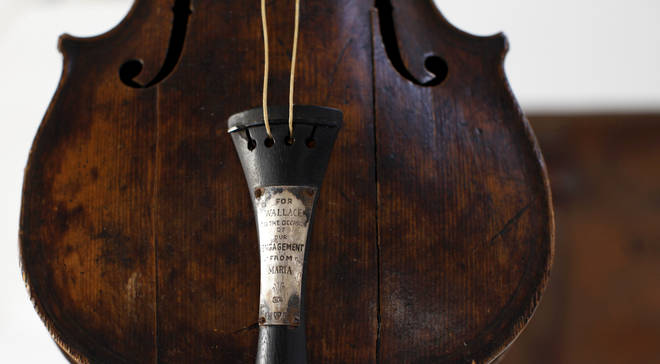
A wedding that never took place
The now-famous violin was crafted in Germany in 1910, and was gifted to Wallace Hartley of Colne, Lancashire, as an engagement present from his new fiancée Maria Robinson. An inscription on the instrument’s tailpiece read, ‘For Wallace, on the occasion of our engagement, from Maria’.
The sweethearts likely met in Leeds, where Hartley played as a musician in various institutions around the city. Having previously provided musical entertainment on the RMS Mauretania, Hartley was contacted shortly before the RMS Titanic departed from Southampton on its maiden voyage with a request that he become its bandleader.
After his initial reluctance at leaving his fiancée, Hartley agreed to join the transatlantic crossing, hoping to secure future work with some new contacts before returning for his June wedding.
Tragically, the wedding never took place. Four days into the crossing, the Titanic hit an iceberg in the North Atlantic ocean, and sank on the 15 April 1912, taking more than 1,500 passengers and crew members with it – Hartley included.
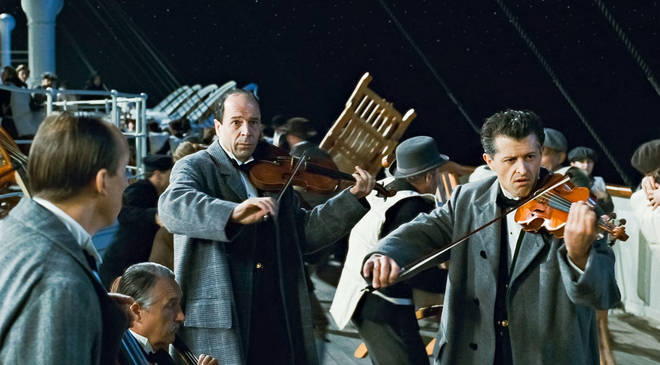
‘Gentlemen, it has been a privilege playing with you tonight’
In a depiction made famous by the 1997 film Titanic (see above), the eight musicians on board the ship continued to play amid the havoc, as women, children and first-class passengers were loaded hurriedly onto lifeboats.
At maximum capacity, the lifeboats barely had space for half the people on the ship, and as the wooden boats began to depart with seats still vacant, it soon became clear that many of those still on board the rapidly sinking cruise liner would not be saved.
As was his command, bandleader Wallace H. Hartley gathered his seven fellow musicians to play music in an attempt to calm the pandemonium and still people’s fears. Survivors of the ship report that the band played upbeat music, including ragtime and popular comic songs of the late 19th and early 20th century.
One of the popular myths surrounding the Titanic and its historic fate is that the band played the hymn ‘Nearer, My God, to Thee’ in their final moments. Some accounts dispute this, claiming that the musicians were last heard playing Archibald Joyce’s waltz, ‘Dream of Autumn’, before abandoning their instruments.
If the musicians were indeed playing music to the very end, it does seem likely that Hartley would have chosen the hymn as their swan song.
Hartley’s father, Albion, was the choirmaster at the Methodist chapel in the family’s hometown, and had introduced ‘Nearer, My God, to Thee’ to the congregation.
Hartley had also told a former colleague on the Mauretania that, should he ever find himself aboard a sinking ship, the hymn would be one of two pieces he would play in his final moments – a chilling foreshadowing of events to come.
Only three of the musicians’ bodies were recovered from the wreckage, including Hartley’s. A detailed inventory documents the personal effects that were found with him, including a gold fountain pen and silver match box, both engraved with his initials, and a diamond solitaire ring.
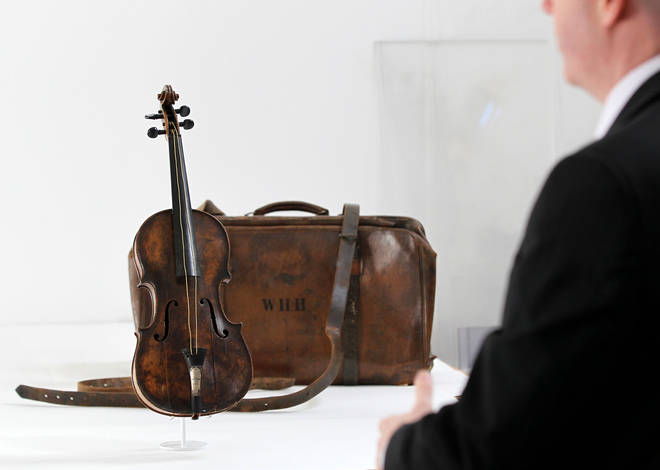
Rediscovered in an attic
Despite some reports to the contrary, there is no evidence that his violin was found strapped to his chest in its case. We do know, however, that it must have been recovered, along with a satchel embossed with Hartley’s initials, as a telegram transcript from Maria Robinson to the Provincial Secretary of Nova Scotia reads, ‘I would be most grateful if you could convey my heartfelt thanks to all who have made possible the return of my late fiancé’s violin’.
When Robinson died in 1939, her sister gave the violin to the Bridlington Salvation Army, who passed it on to a violin teacher. The teacher passed it on further, and in 2004 it was rediscovered in an attic in the UK.
Sceptics initially refused to believe that this could be the real thing, assuming that the violin would have been so badly damaged by water that it simply could not have survived.
However, after nine years of evidence gathering and forensic analysis, including CT scans and a certification by the Gemological Association of Great Britain, it was confirmed that this was, in fact, the violin that Wallace Hartley had played aboard the RMS Titanic.
Forensic experts certified that the engraving on the metal tailpiece was “contemporary with those made in 1910”, and that the instrument’s “corrosion deposits were considered compatible with immersion in sea water”.
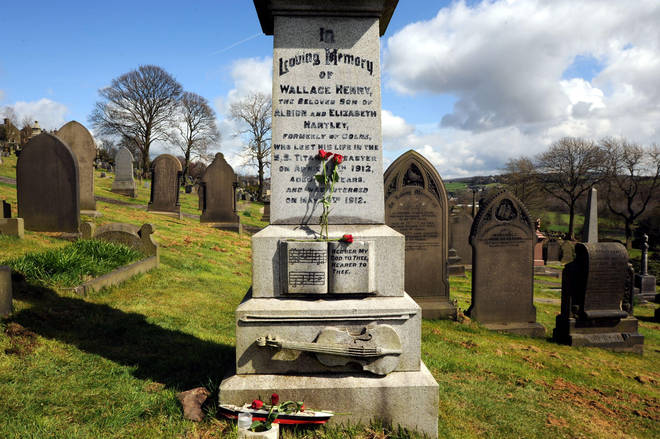
Sold for nearly a million
On 19 October 2013, the violin was sold at auction by Henry Aldridge & Son in Wiltshire for £900,000 (equivalent to over £1,000,000 in 2022), a record figure for Titanic memorabilia. The previous record was thought to have been £220,000 paid in 2011 for a plan of the ship that had been used to inform the inquiry into the ship’s sinking.
The violin is irreparably damaged and deemed unplayable, with two large cracks caused by water damage and only two remaining strings. Its current owners are unknown, but believed to be British.
As for Hartley, he was buried in his hometown of Colne in Lancashire, at a funeral service that was attended by over 20,000 people, and included the hymn that will forever be associated with him, ‘Nearer, My God, to Thee’.
The headstone of his final resting place includes an inscription of the hymn’s opening notes, above a violin carved out of stone.
Tuesday, August 9, 2022
24 Amazing Facts About JS Bach
Published by Revelle Team on June 10, 2016
Baroque and Bach are two words that are very often linked together. Widely regarded as one of the definitive composers of the Baroque period, Johann Sebastian Bach’s works are still loved today as each new generation discovers his incredible gift.
However, many people are unaware that without some specific enthusiasm and recognition for this master’s classical works, Bach might have been relegated to obscurity. Only having been known as a skilled organist, musical mathematician, and that guy with the perfectly curled, white wig.
Fortunately however, his musical compositions were admired and appreciated by geniuses like of Mozart and Beethoven; and in 1829, nearly 60 years after his death, Felix Mendelssohn, carried Bach’s Passion According to St. Matthew out of oblivion and into the German concert hall for a significant historical event. Although it had been nearly a hundred years after this beautiful masterpiece had been composed, the concert ignited a flame of curiosity and re-evaluation of Bach’s work, resulting in a world-wide acknowledgement of his brilliance and importance to Baroque classical music.
Here are 24 additional facts and trivia about this famous composer:
Johann Sebastian Bach was born March 31, 1685 in Eisenach, Thuringia, Germany.
His father, Johann Ambrosius Bach was a 7th generation musician, and carried on the tradition by teaching him how to play the violin.
Bach lost both his parents when he was 10 years old. While living in Ohrdruf, Germany, his older brother Johann Christoph Bach taught him organ.
In 1700, he was granted a scholarship at St. Michael’s School in Luneburg for his fine voice.
During an inaugural recital on the new organ his talents earned him the job of organist in Arnstadt, in 1703, at New Church, where he provided music for the services at the church, as well as instruction in music to the local children.
Bach moved to Muhlhausen in 1707 to become the organist in the Church of St. Blaise.
Bach married his cousin, Maria Barbara Bach, and they had seven children. His sons Wilhelm Friedemann and Carl Philipp Emanuel became composers and musicians like their father.
Bach’s next position was as court organist in Weimer, in 1708 for Duke Wilhelm Ernst. It was here he composed his very famous Toccata in D Minor.
Bach was given a diamond ring in 1714 from the Crown Prince Fredrick of Sweden who was amazed at his playing.
Having angered Duke Wilhelm for requesting release from his position on short notice and desiring to go work for Prince Leopold of Koethen, Bach was arrested and put in jail for several weeks in 1716.
Upon his release from jail, Bach became the conductor of the court orchestra, in which Prince Leopold played.
In 1719, Bach tried to arrange a meeting with another prolific composer of that era, George Frideric Handel. Despite being only 130 kilometers apart, the two never did meet.
Bach’s wife, Maria, died suddenly in 1720 while he was away with Prince Leopold. She was 35 years old. The fifth and final movement of the Partita in D Minor for solo violin, “Chaconne,” was written to commemorate her.
In 1721, Bach married Anna Magdalena Wülcken. They had thirteen children.
Bach wrote the majority of his instrumental works during the Koethen period.
In 1723, he became the choir leader for two churches in Leipzig, Germany, in addition to teaching music classes and giving private lessons.
Most of Bach’s choral music was composed in Leipzig.
Bach’s deep religious faith could be found even in his secular music. He would put the initials “I.N.J.,” a Latin abbreviation that means, In Nomine Jesu, or “in the name of Jesus,”on his manuscripts.
The Brandenburg Concertos were written in 1721 as a tribute to the Duke of Brandenburg.
The Well-Tempered Clavier was composed as a collection of keyboard pieces to help students learn various keyboard techniques and methods.
Fredrick the Great, King of Prussia inspired Bach’s composition of a set of fugues called Musical Offering in 1740.
The Art of Fugue was begun in 1749 but was not completed.
After struggling with blindness and a failed surgery on his eyesight, Bach suffered a stroke and died in Leipzig, July 28, 1750. He was 65 years old.
His entire career was spent in a contracted area of Germany that is smaller than most of the States in America.
Johann Sebastian Bach is considered the quintessential composer of the Baroque era, and one of the most important figures in classical music in general. His complex musical style was nearly lost in history but gratefully it survives to be studied and enjoyed today. You can learn more about this icon by visiting his dedicated website. In the words of Johannes Brahms (1833-1897), “Study Bach: there you will find everything.”
30 Inspirational Quotes For Every Musician
Published by StringOvation Team on February 09, 2017
Most of us, from time to time feel discouraged. In fact, because we all need emotional boosts every once in a while, a large portion of social media content is motivational, designed to uplift your soul and the souls of others. So, in the spirit of time-honored encouragement, the following quotes are specifically for musicians. If you’ve been feeling down about your progress as a musician or just about where your talent might take you, the musings of these various composers and performers should help elevate your psyche.
The following inspirational quotes for musicians were gleaned from a variety of sources, including BrainyQuotes, Musicians Buy Line, Classic FM, and Quotes-Inspirational. They feature insights from musicians of all genres and levels of success, as well as a few from composers, philosophers, and other iconic thinkers.
Igor Stravinsky: "Lesser artists borrow, great artists steal."
J.S. Bach: "I was obliged to be industrious. Whoever is equally industrious will succeed equally well."
Robert Schumann: "To send light into the darkness of men's hearts - such is the duty of the artist."
Dmitri Shostakovich: "A creative artist works on his next composition because he was not satisfied with his previous one."
Elvis Presley: “The truth is like the sun. You can shut it out for a time, but it ain't goin' away.”
Mick Jagger: “Lose your dreams and you might lose your mind.”
BB King: “The beautiful thing about learning is that nobody can take it away from you.”
Bob Marley: “One good thing about music, when it hits you, you feel no pain."
Pablo Casals: “Music is the divine way to tell beautiful, poetic things to the heart."
Billy Joel: “I think music in itself is healing. It's an explosive expression of humanity. It's something we are all touched by. No matter what culture we're from, everyone loves music."
John Lennon: “Life is what happens when you’re making other plans.”
Marcus Miller: “It's a great thing about being a musician; you don't stop until the day you die, you can improve. So it's a wonderful thing to do."
Thelonious Monk: “All musicians are potential band leaders.”
Sting: “If you play music with passion and love and honesty, then it will nourish your soul, heal your wounds and make your life worth living. Music is its own reward.”
Ludwig van Beethoven: “Music is a higher revelation than all wisdom and philosophy. Music is the electrical soil in which the spirit lives, thinks and invents.”
Bono (U2): “Music can change the world because it can change people.”
Carlos Santana: “Just as Jesus created wine from water, we humans are capable of transmuting emotion into music.”
John Denver: “Music does bring people together. It allows us to experience the same emotions. People everywhere are the same in heart and spirit. No matter what language we speak, what color we are, the form of our politics or the expression of our love and our faith, music proves: We are the same.”
Plato: “Music is the movement of sound to reach the soul for the education of its virtue.”
Thomas Carlyle: “Music is well said to be the speech of angels.”
Roy Ayers: “The true beauty of music is that it connects people. It carries a message, and we, the musicians, are the messengers.”
William Congreve: “Music hath charms to soothe the savage beast, to soften rocks or bend a knotted oak.”
Oliver Wendell Holmes: “Take a music bath once or twice a week for a few seasons, and you will find that it is to the soul what the water bath is to the body.”
Chris S. Salazar: “Music is by far the most wonderful method we have to remind us each day of the power of personal accomplishment.”
Karlheinz Stockhausen: “Whenever I felt happy about having discovered something, the first encounter, not only with the public, with other musicians, with specialists, etc, was that they rejected it.”
John McLaughlin: “At the risk of sounding hopelessly romantic, love is the key element. I really love to play with different musicians who come from different cultural backgrounds.”
Billy Joel: “Musicians want to be the loud voice for so many quiet hearts.”
Neil Diamond: “Because my musical training has been limited, I've never been restricted by what technical musicians might call a song.”
Igor Stravinsky: “Too many pieces of music finish too long after the end.”
Plato: “Music gives a soul to the universe, wings to the mind, flight to the imagination, and life to everything.”
You may have already heard some of these inspirational quotes for musicians, but it never hurts to hear them again.
Monday, August 8, 2022
"SCHINDLER'S LIST" IN THE LARGEST EUROPEAN SYNAGOGUE: XAVER VARNUS & CS...
Morricone conducts Morricone: The Mission (Gabriel's Oboe)
「めぐり逢い An Affair To Remember」サウンド・トラック Sound Track
Sunday, August 7, 2022
Mantovani - his music and his life
Friday, August 5, 2022
Four Phantoms Medley ft. Sarah Brightman | The Phantom of The Opera
Can't Take My Eyes Off You (Stunnig Gimnazija Kranj Symphony Orchestra)
Joys and Sorrows of Outdoor Concerts
by Janet Horvath, Interlude
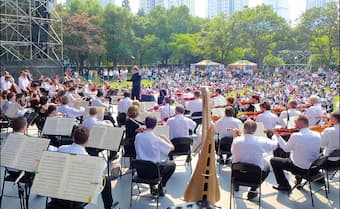
The Prague Symphony Orchestra outdoor performance © cleveland.com
Ah! It’s finally summer festival and outdoor concert time. Families love to picnic while orchestras play in various outdoor venues.
The audiences come to our outdoor performances in droves. They are excited to introduce the orchestra to their children where they can run around freely and dance to the music waving their little arms conducting as it were. I can remember the joys and sorrows of playing outside. Either it was extremely hot with humidity that caused the fingerboard of one of our cellos to melt off, or so cold that we were reduced to wearing mittens with the fingertips cut off! We would often set up right on the grass with barely a shell behind us, exposed to the sun, rain and wind. We had long clothespins to hold the music down and I was the lunger — I’d unclip the page and whip it over while my stand-partner continued playing. Then he would leap up to clip the newly turned page on the left side of the stand — teamwork to say the least. We were ok as long as the stands didn’t blow over as well! Our survival kit had to include the clothespins, sunglasses, cloths to protect our instruments from direct sun, bug spray, seat cushions for the hard folding chairs, a white jacket if it was cold which one could whip off if it was hot, sunscreen, and water bottles.
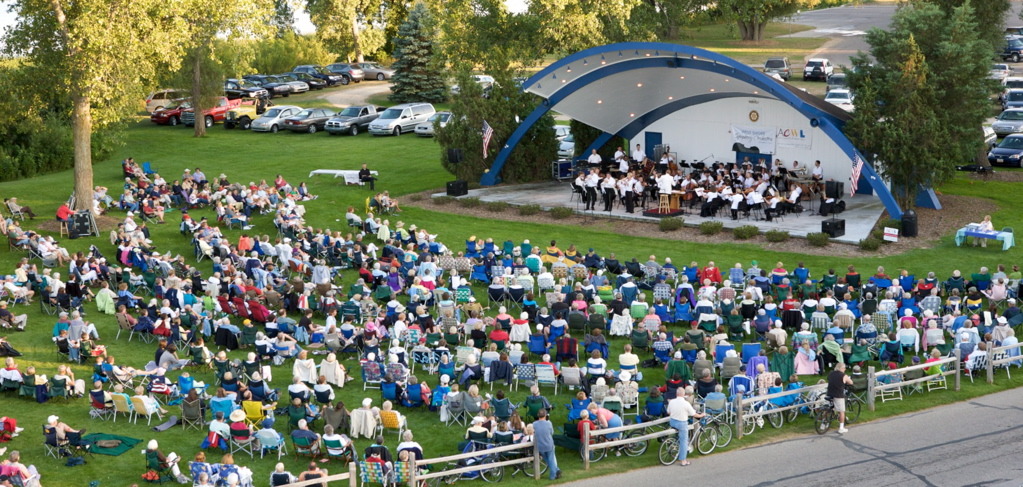 One summer black and green thick clouds rolled in and sure enough torrential rains engulfed us. With only one canvas bass case among the 10 players, the bass players took turns rushing each bass to the wooden trunks, which were several feet away behind the meager shell.
One summer black and green thick clouds rolled in and sure enough torrential rains engulfed us. With only one canvas bass case among the 10 players, the bass players took turns rushing each bass to the wooden trunks, which were several feet away behind the meager shell.
Another summer when I was principal cello I performed the famous cello solo in Poet and Peasant Overture, by Franz von Suppé, which I thought I did famously even on my “outdoor” cello. Evidently, a bird thought otherwise and dropped one on my cello. Editorial comment no doubt.
Franz von Suppé: Dichter und Bauer (Poet and Peasant): Overture (London Philharmonic Orchestra; Neville Marriner, cond.)
No concert was complete without Tchaikovsky’s 1812 Overture, and since it was outdoors we used real cannons. One year we played sitting on hay bales in an open field. Everyone was happy but the cows. They were terrified by the noise.
We and many other orchestras always finish with the encore The Stars and Stripes Forever, the famous march of America’s “March King” John Philip Sousa, which always gets the audience clapping in rhythm.
John Philip Sousa: The Stars and Stripes Forever (Royal Artillery Band; Keith Brion, cond.)
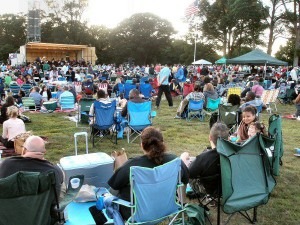 As a child Sousa attended band rehearsals with his father. His heartfelt ambition was to play with the local circus band but his parents disapproved so vigorously that he became an apprentice musician with the Marine Band. At the tender age of twenty-six he became the Band’s director. During his tenure Sousa expanded the Band’s repertoire with not only the work of Tchaikovsky, Verdi, Wagner and others — Europe’s then contemporary composers — but his own compositions such as President Garfield’s Inauguration March, Semper Fidelis, and The Washington Post. Sousa was extremely popular so much so that he left the Marine Band to start his own band in 1892.
As a child Sousa attended band rehearsals with his father. His heartfelt ambition was to play with the local circus band but his parents disapproved so vigorously that he became an apprentice musician with the Marine Band. At the tender age of twenty-six he became the Band’s director. During his tenure Sousa expanded the Band’s repertoire with not only the work of Tchaikovsky, Verdi, Wagner and others — Europe’s then contemporary composers — but his own compositions such as President Garfield’s Inauguration March, Semper Fidelis, and The Washington Post. Sousa was extremely popular so much so that he left the Marine Band to start his own band in 1892.
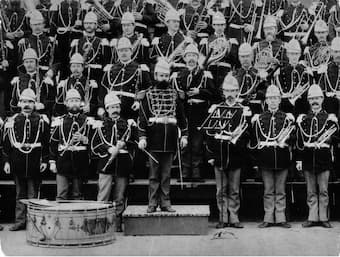
The USA Marine Band with conductor John Philip Sousa © Keystone/Getty Images
While on vacation in Europe four years later, Sousa received word that his band manager, David Blakely, a good friend, had died. Sousa immediately sailed back to the States. The music of The Stars and Stripes Forever began to come to him. Sousa wrote: ” …absorbed in thoughts of my manager’s death and the many duties and decisions which awaited me in New York, suddenly, I began to sense a rhythmic beat of a band playing within my brain. Throughout the whole tense voyage, that imaginary band continued to unfold the same themes, echoing and re-echoing the most distant melody. I did not transfer a note of that music to paper while I was on the steamer, but when we reached shore, I set down the measures that my brain-band had been playing for me, and not a note of it has ever changed.” Sousa’s Band played the march at almost every concert it held after that. Interestingly, Sousa set words to it, but it is rarely performed that way.

© The Bow and Baton
Usually our outdoor concerts were scheduled to coincide with late summer sunsets for the fireworks displays. The stage managers erected great big tall lights so we could see our music. Sure enough, as soon as it became dark, out came the insects. We could see them swarming around the lights and descending on us juicy unsuspecting victims. We couldn’t stop playing to swat a mosquito that had landed on us in the middle of Tchaikovsky! Sometimes we would have the opportunity in a bar or two of rest to hit a couple of them with our bows while they crawled on our music. One year a child came running up to the stage to spray bug repellant on our exposed ankles while we continued our playing and flailing.
Despite years of promises from the sponsors, as soon as the fireworks trigger person heard The Stars and Stripes Forever he invariably launched the fireworks, usually right behind the orchestra shell. We hurried frantically to pack up our instruments while cinders landed on us. The noise of course was deafening both from the booms and the ooohs and aahhhs of the crowds.
Some festivals have fancy facilities like Tanglewood in Massachusetts, home of the Boston Symphony, where there is a permanent stage and benches for seating the audience. The orchestra has air conditioning blowing up from the floor and a roof over their heads, good chairs and lighting, and a backstage. Audiences can purchase picnic baskets filled with everything one would want for dinner including wine! Santa Fe Opera is a state-of-the-art outdoor facility too as is the Aspen Festival. In Europe there are many festivals some with indoor facilities. The famous Verbier Festival’s main hall The Salle des Combins seats 1700. Each row is on a separate tier, which guarantees and excellent view of the stage. Improvements to the soundproofing and heat insulation make this a very high quality non-permanent venue. Others include Flanderies Musicales de Reims, and Granada International Festival of Music and Dance and many others (you can check on the festivals section for more information.)
Next summer we look forward to the throngs who love hearing the orchestra outside and in!
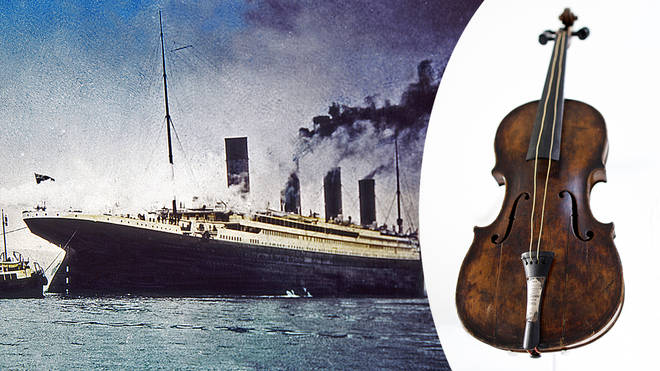


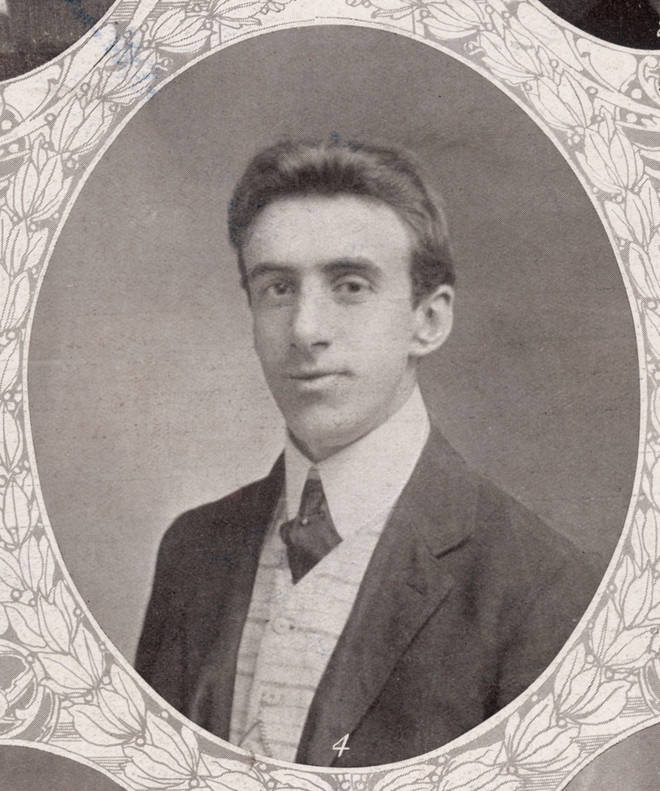
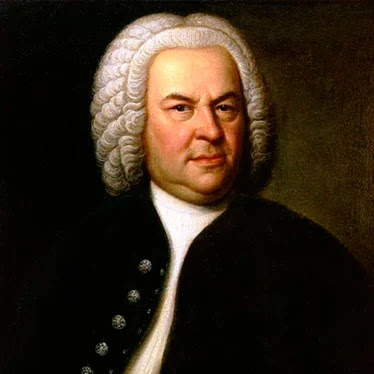

.jpg)
.jpg)